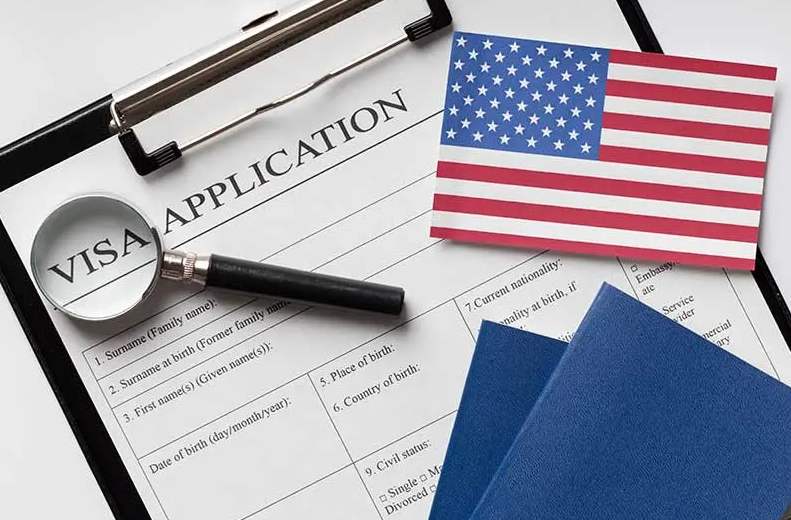The United States, a land of opportunity, has long been a beacon for talented professionals worldwide. For architects, the allure of contributing to the American skyline, working on groundbreaking projects, and experiencing diverse architectural styles is undeniable. However, navigating the complex landscape of immigration and securing Architect Jobs for Immigrants in the USA with Visa Sponsorship Opportunities can seem daunting.
This article aims to illuminate the path, providing essential information and practical tips for aspiring immigrant architects seeking to build their careers in the USA. This is more than just a guide to securing a job; it’s a guide to building a life, a legacy, and a future within the dynamic and ever-evolving architectural tapestry of the United States. We will explore how to translate your international experience into a compelling narrative for American employers, how to navigate the cultural nuances of the workplace, and how to build a thriving career that transcends geographical boundaries.
Why the US Needs Immigrant Architects
The American architectural landscape, a dynamic blend of tradition and innovation, thrives on a constant influx of fresh perspectives and diverse skill sets. While domestic talent undoubtedly forms the bedrock of the industry, the need for immigrant architects is more than just a matter of filling vacancies; it’s about enriching the very fabric of American design. Here’s a deeper dive into the compelling reasons why the US actively seeks and benefits from the contributions of immigrant architects:
-
Filling the Skills Gap in a Booming Industry:
- The US construction and design sector is experiencing significant growth, fueled by urban revitalization, infrastructure projects, and a surge in demand for specialized architectural expertise. This growth often outpaces the availability of domestic talent, creating a critical skills gap.
- Specialized areas like sustainable design, BIM (Building Information Modeling), and advanced computational design are experiencing rapid evolution. Immigrant architects often bring cutting-edge knowledge and experience in these areas, bridging the gap and accelerating innovation.
- Many regions of the US are experiencing population growth, necessitating increased construction and architectural services. This creates a demand that domestic talent alone cannot satisfy.
-
Injecting Diverse Perspectives and Global Design Influences:
- Immigrant architects bring a wealth of international experience, exposing US firms to diverse design philosophies, construction techniques, and cultural sensitivities. This cross-pollination of ideas fuels creativity and innovation.
- In an increasingly globalized world, understanding diverse cultural contexts is crucial for designing spaces that are inclusive and accessible. Immigrant architects offer invaluable insights into these nuances.
- They possess unique perspectives on urban planning, sustainable development, and community design, which can contribute to creating more vibrant and equitable cities.
-
Driving Innovation and Technological Advancement:
- Immigrant architects often possess specialized skills in emerging technologies, such as advanced 3D modeling, parametric design, and computational architecture. These skills are essential for pushing the boundaries of architectural innovation.
- They can bring new approaches to problem-solving and design challenges, fostering a culture of continuous improvement within US firms.
- Their exposure to international best practices and emerging trends can accelerate the adoption of innovative technologies in the US architectural sector.
-
Enhancing the Competitiveness of US Firms:
- Hiring immigrant architects allows US firms to access a wider pool of talent, ensuring they have the best possible team to compete in the global market.
- Their international experience and diverse perspectives can give US firms a competitive edge in bidding for international projects.
- By fostering a diverse and inclusive workplace, firms can attract and retain top talent from around the world.
-
Addressing Regional and Specialized Needs:
- Certain regions of the US may have specific architectural needs that require specialized expertise. For example, coastal areas may require expertise in coastal construction and resilience, while rapidly growing cities may need expertise in high-density urban design.
- Immigrant architects with specialized skills can fill these niche needs, contributing to the development of unique and contextually relevant architectural solutions.
- Areas with a high concentration of specific cultural communities benefit greatly from architects who have experience in those cultures.
-
Contributing to the Economic Growth and Cultural Enrichment of the US:
- Immigrant architects contribute to the US economy by creating jobs, generating revenue, and driving innovation.
- They enrich the cultural landscape of the US by bringing their unique design sensibilities and cultural perspectives to the built environment.
- They add to the diversity of the United States, which is one of the countries greatest strengths.
Immigrant architects are not just filling job vacancies; they are contributing to the intellectual, creative, and economic vitality of the US architectural sector. They bring a tapestry of talent, perspectives, and experiences that are essential for shaping the future of American design.
Understanding Visa Sponsorship for Architect Jobs
The quest for Architect Jobs for Immigrants in the USA with Visa Sponsorship Opportunities necessitates a thorough understanding of the US visa system. It’s not just about finding a job; it’s about navigating a complex legal framework that dictates your ability to work and live in the country. Here’s a deeper exploration of the key visa categories relevant to immigrant architects:
-
The H-1B Visa: The Cornerstone for Skilled Professionals
- Specialty Occupation: The H-1B visa is designed for professionals in “specialty occupations” requiring a bachelor’s degree or its equivalent. Architecture, with its rigorous educational requirements and specialized knowledge, typically qualifies.
- Employer Sponsorship: Crucially, you cannot self-petition for an H-1B. A US employer must sponsor you, filing a petition with the USCIS (United States Citizenship and Immigration Services). This signifies their commitment to employing you.
- Labor Condition Application (LCA): Before filing the H-1B petition, the employer must obtain an LCA from the Department of Labor. This ensures that the employment of a foreign worker will not adversely affect the wages and working conditions of US workers.
- Annual Quota (Cap): The H-1B visa has an annual quota, which often leads to a lottery system when demand exceeds the available visas. This makes the process highly competitive.
- Educational Requirements: A bachelor’s degree in architecture from an accredited institution is generally required. Foreign degrees must be evaluated for US equivalency.
- Potential Challenges: The H-1B process is known for its complexity, processing times, and potential for Requests for Evidence (RFEs) from USCIS.
-
The TN Visa: A Streamlined Path for North American Architects
- USMCA (formerly NAFTA): The United States-Mexico-Canada Agreement (USMCA) provides a streamlined visa process for architects from Canada and Mexico.
- Designated Professions: Architecture is one of the designated professions under the TN visa category.
- Simplified Application Process: Compared to the H-1B, the TN visa application process is generally simpler and faster.
- No Annual Quota: There is no annual quota for TN visas, making them more accessible.
- Temporary Status: TN visas are typically granted for one year, but they can be renewed indefinitely.
- Educational and Professional Requirements: Applicants must demonstrate that they meet the educational and professional requirements for architects in the US.
-
The O-1 Visa: Recognizing Extraordinary Ability
- Extraordinary Ability: The O-1 visa is reserved for individuals with extraordinary ability in the arts, sciences, education, business, or athletics.
- Evidence of Extraordinary Ability: Applicants must provide substantial evidence of their achievements, such as awards, publications, exhibitions, and professional recognition.
- High Standard: The O-1 visa has a high standard of eligibility, making it suitable for architects with exceptional talent and a proven track record of success.
- No Annual Quota: Like the TN visa, the O-1 visa does not have an annual quota.
- Employer Sponsorship (or Agent): While self-petitioning is possible in very rare situations, typically, the O-1 visa requires sponsorship from an employer or an agent.
- Suitable for Renowned Architects: This visa is well fitted for architects with international level awards, and those who have had their works published in major architectural journals.
-
The E-3 Visa: A Specialized Pathway for Australian Architects
- Specialty Occupation: The E-3 visa is specifically for Australian professionals working in specialty occupations in the US.
- Similar to H-1B: The E-3 visa shares similarities with the H-1B visa, requiring employer sponsorship and a bachelor’s degree or its equivalent.
- Annual Quota: The E-3 visa has its own annual quota, separate from the H-1B quota.
- Specific to Australian Citizens: This visa category is exclusively for Australian citizens.
- Renewable: The E-3 visa is renewable, allowing for extended stays in the US.
Key Considerations for Visa Sponsorship:
- Employer Willingness: Finding an employer willing to sponsor a visa is a crucial first step. Many firms, particularly larger ones, have experience with visa sponsorship.
- Timing: The timing of your application is critical, especially for the H-1B visa, which has specific filing periods.
- Documentation: Meticulous documentation is essential for a successful visa application.
- Legal Counsel: Consulting with an experienced immigration attorney is highly recommended to navigate the complexities of the visa process.
Understanding these visa categories is paramount for immigrant architects seeking to build their careers in the US. By carefully evaluating your qualifications and exploring the available options, you can increase your chances of securing Architect Jobs for Immigrants in the USA with Visa Sponsorship Opportunities.
Essential Requirements for Securing Architect Jobs for Immigrants in the USA with Visa Sponsorship
Securing Architect Jobs for Immigrants in the USA with Visa Sponsorship Opportunities isn’t solely about architectural prowess. It’s a multifaceted process that demands meticulous preparation, strategic networking, and a deep understanding of the US professional landscape. Here’s a breakdown of the key requirements:
-
Educational and Professional Qualifications:
- Accredited Architectural Degree: A bachelor’s or master’s degree in architecture from an accredited institution is foundational. US employers typically prioritize graduates from programs accredited by the National Architectural Accrediting Board (NAAB).
- Foreign Degree Evaluation: If your degree is from a foreign institution, it must be evaluated by a recognized credential evaluation service to determine its US equivalency. This evaluation ensures that your qualifications meet US standards.
- Architectural Licensing: Requirements for architectural licensure vary by state. Research the specific licensing requirements of the state where you intend to work. The National Council of Architectural Registration Boards (NCARB) provides information on licensing requirements and reciprocity.
- Professional Experience: Relevant professional experience is highly valued. A strong portfolio showcasing your design skills, technical proficiency, and project management capabilities is essential.
- Technical Proficiency: Proficiency in industry-standard software, such as AutoCAD, Revit, SketchUp, and Adobe Creative Suite, is crucial. Familiarity with BIM (Building Information Modeling) is increasingly important.
-
Visa Sponsorship Eligibility:
- Employer Willingness: The most critical requirement is finding an employer willing to sponsor your visa. Many firms, especially larger ones, have experience with visa sponsorship, but it’s essential to identify them early in your job search.
- Visa Category Compliance: Understanding the specific requirements of the visa category you are pursuing (H-1B, TN, O-1, or E-3) is vital. Ensure that your qualifications align with the visa criteria.
- Labor Condition Application (LCA) (for H-1B): If pursuing an H-1B visa, your employer must obtain an LCA from the Department of Labor, demonstrating that your employment will not negatively impact US workers.
- Evidence of Extraordinary Ability (for O-1): For the O-1 visa, you must provide substantial evidence of your extraordinary ability in architecture, such as awards, publications, and recognition from peers.
- Citizenship Requirements (for TN and E-3): TN visas are limited to Canadian and Mexican citizens, while E-3 visas are exclusive to Australian citizens.
-
Language and Communication Skills:
- English Proficiency: Strong English language skills are essential for effective communication with colleagues, clients, and regulatory bodies.
- Professional Communication: Excellent written and verbal communication skills are crucial for preparing proposals, presenting designs, and collaborating with project teams.
- Cultural Competence: The ability to adapt to the US work culture and communicate effectively with people from diverse backgrounds is highly valued.
-
Networking and Professional Presence:
- Online Presence: A strong online presence, including a professional LinkedIn profile and a portfolio website, is essential for showcasing your work and connecting with potential employers.
- Networking: Networking with architects, design firms, and industry professionals through online platforms, industry events, and professional organizations is crucial.
- Professional Organizations: Joining organizations like the American Institute of Architects (AIA) can provide valuable networking opportunities and resources.
- Portfolio and Resume: A well-crafted portfolio and resume tailored to the US architectural market are essential for showcasing your skills and experience.
-
Legal and Regulatory Compliance:
- Immigration Attorney: Consulting with an experienced immigration attorney is highly recommended to navigate the complexities of the visa process.
- Document Translation and Evaluation: All foreign documents must be translated and evaluated by a recognized agency.
- State-Specific Regulations: Be aware of state-specific regulations regarding architectural practice and licensure.
-
Soft Skills and Cultural Adaptation:
- Adaptability: The ability to adapt to the US work culture and architectural practices is essential.
- Collaboration: Strong teamwork and collaboration skills are highly valued in the US architectural industry.
- Problem-Solving: The ability to solve complex design and construction challenges is crucial.
- Professionalism: Maintaining a professional demeanor and adhering to ethical standards is essential.
By addressing these requirements, you can significantly increase your chances of securing Architect Jobs for Immigrants in the USA with Visa Sponsorship Opportunities. Remember that the process requires patience, persistence, and a proactive approach.
Architect Jobs for Immigrants in the USA with Visa Sponsorship Opportunities
While the general pathways are important, let’s dive into the specific types of Architect Jobs for Immigrants in the USA with Visa Sponsorship Opportunities that are currently in demand, and how to position yourself for them.
-
Architectural Designer (Entry-Level/Mid-Level)
Average Salary: $60,000 – $80,000 per year.
Architectural designers are the backbone of many firms, translating conceptual designs into detailed drawings and specifications. They work closely with senior architects, contributing to project development from schematic design to construction documentation. This role often involves utilizing CAD and BIM software, conducting site analyses, and ensuring compliance with building codes. For immigrants, this entry-level/mid-level position is a great way to start in the US market, gain experience, and build a strong portfolio.
-
Project Architect
Average Salary: $80,000 – $110,000 per year.
Project architects are responsible for managing the design and execution of architectural projects. They coordinate with clients, consultants, and contractors, ensuring that projects are completed on time and within budget. This role demands strong leadership, communication, and project management skills. Immigrant architects with experience in project management and a strong grasp of US building codes are highly sought after for these roles.
-
Design Architect
Average Salary: $90,000 – $120,000 per year.
Design architects focus on the conceptual and aesthetic aspects of architectural projects. They develop innovative design solutions, create compelling presentations, and collaborate with clients to realize their visions. This role requires a strong artistic sensibility, a deep understanding of design principles, and proficiency in 3D modeling and visualization software. Immigrant architects with unique design perspectives and a strong portfolio of creative work can excel in this field.
-
BIM (Building Information Modeling) Manager
Average Salary: $85,000 – $115,000 per year.
BIM managers are responsible for implementing and managing BIM workflows within architectural firms. They develop BIM standards, train staff, and ensure that BIM models are accurate and up-to-date. This role requires expertise in BIM software, project coordination, and data management. With the increasing adoption of BIM in the US construction industry, immigrant architects with BIM expertise are in high demand.
-
Sustainable Design Architect
Average Salary: $90,000 – $130,000 per year.
Sustainable design architects specialize in creating environmentally friendly and energy-efficient buildings. They incorporate sustainable materials, passive design strategies, and green building technologies into their projects. This role requires knowledge of LEED certification, sustainable building practices, and energy modeling software. As sustainability becomes a core focus in US architecture, immigrant architects with expertise in green building are highly valued.
-
Urban Designer
Average Salary: $85,000 – $125,000 per year.
Urban designers focus on the planning and design of urban spaces, including streets, parks, and public spaces. They work with city planners, developers, and community groups to create vibrant and sustainable urban environments. This role requires knowledge of urban planning principles, zoning regulations, and community engagement. Immigrant architects with international experience in urban design can bring valuable perspectives to US cities.
-
Healthcare Architect
Average Salary: $95,000 – $135,000 per year.
Healthcare architects specialize in the design of healthcare facilities, such as hospitals, clinics, and medical offices. They understand the unique requirements of healthcare environments, including patient safety, infection control, and accessibility. This role requires knowledge of healthcare regulations, medical technology, and evidence-based design. Immigrant architects with experience in healthcare design are in high demand due to the specialized nature of the field.
-
Commercial Architect
Average Salary: $90,000 – $130,000 per year.
Commercial architects design a wide range of commercial buildings, including office buildings, retail spaces, and hotels. They understand the needs of commercial clients, including maximizing space utilization, creating appealing environments, and adhering to budget constraints. This role requires knowledge of commercial building codes, construction management, and client relations. Immigrant architects with experience in commercial design can contribute to the development of dynamic and functional commercial spaces.
-
Institutional Architect
Average Salary: $85,000 – $125,000 per year.
Institutional architects design buildings for public and private institutions, such as schools, universities, and government buildings. They understand the specific requirements of institutional clients, including educational needs, security concerns, and accessibility. This role requires knowledge of institutional building codes, educational design principles, and public procurement processes. Immigrant architects with experience in institutional design can contribute to the creation of inspiring and functional public spaces.
-
Architectural Technologist
Average Salary: $70,000 – $95,000 per year.
Architectural technologists are highly skilled technicians who work closely with architects to produce detailed construction drawings and specifications. They possess a deep understanding of building materials, construction techniques, and building codes. This role requires proficiency in CAD software, knowledge of construction documents, and attention to detail. Immigrant architects with strong technical skills and experience in construction documentation are highly valued for these roles.
These job roles offer a range of opportunities for immigrant architects to contribute their skills and expertise to the US architectural landscape. Remember that securing visa sponsorship is a crucial aspect of the job search, and focusing on firms known for hiring international talent is essential.
Challenges and Considerations
Navigating the path to securing Architect Jobs for Immigrants in the USA with Visa Sponsorship Opportunities isn’t without its hurdles. Beyond the excitement of building a career in a new country, there’s a landscape of challenges and considerations that demand careful attention. Here’s a deeper exploration of these crucial aspects:
-
The Complexities of Visa Sponsorship:
- H-1B Lottery: The H-1B visa, a common pathway, is subject to an annual quota and a lottery system. This creates uncertainty and can prolong the job search.
- Employer Reluctance: Not all architectural firms are willing or equipped to sponsor visas. The process can be time-consuming and costly for employers, leading to reluctance.
- Visa Processing Times: Visa processing can be lengthy, with potential delays and requests for additional documentation (RFEs), disrupting career plans.
- Visa Renewal and Status Maintenance: Maintaining visa status requires adherence to strict regulations, and visa renewals can be stressful.
-
Licensing and Accreditation Discrepancies:
- State-Specific Requirements: Architectural licensing in the US is regulated at the state level. Requirements vary significantly, creating a complex web of regulations.
- Foreign Credential Evaluation: Evaluating foreign architectural degrees and experience for US equivalency can be challenging and expensive.
- NCARB Requirements: Navigating the National Council of Architectural Registration Boards (NCARB) requirements for licensure can be complex, especially for those with international training.
- Licensing Exams: Passing the Architect Registration Examination (ARE) is a significant hurdle, requiring extensive preparation and knowledge of US building codes and practices.
-
Language and Cultural Adaptation:
- Professional English: While general English proficiency is essential, professional communication in architecture requires specialized vocabulary and industry-specific language.
- US Work Culture: Adapting to the US work culture, which may differ from your home country, can be challenging.
- Cultural Nuances: Understanding cultural nuances in client interactions and team collaborations is crucial for success.
- Building Codes and Regulations: The US has unique building codes and regulations that require thorough understanding.
-
Financial and Logistical Considerations:
- Relocation Costs: Relocating to the US can be expensive, including travel, housing, and living expenses.
- Legal Fees: Hiring an immigration attorney adds to the overall cost of the process.
- Cost of Living: The cost of living varies significantly across the US, and it’s essential to factor this into salary expectations.
- Housing and Transportation: Finding suitable housing and transportation in a new city can be challenging.
-
Building a Professional Network:
- Starting from Scratch: Immigrants often need to build their professional network from the ground up.
- Networking Challenges: Networking can be challenging for those unfamiliar with US professional circles.
- Maintaining Connections: Keeping in touch with contacts and building relationships requires effort.
- Establishing Credibility: Proving your credibility and building trust with potential employers and clients takes time.
-
Maintaining Mental and Emotional Well-being:
- Culture Shock: Adjusting to a new culture can lead to culture shock and feelings of isolation.
- Family Separation: If family members are not relocating immediately, separation can be emotionally challenging.
- Stress of the Process: The visa application and job search process can be stressful and anxiety-inducing.
- Maintaining Confidence: Staying positive and maintaining confidence throughout the process is essential.
-
Adapting to Technological Advancements:
- BIM Proficiency: US architectural firms increasingly rely on BIM software. Immigrants must be proficient in these technologies.
- Emerging Technologies: Staying up-to-date with emerging technologies, such as AI and parametric design, is crucial.
- Software Compatibility: Ensuring that your software skills are compatible with US industry standards is essential.
By acknowledging these challenges and considerations, immigrant architects can proactively prepare and navigate the process with greater awareness and resilience.
Conclusion
Securing Architect Jobs for Immigrants in the USA with Visa Sponsorship Opportunities is achievable with careful planning, persistence, and a strategic approach. By understanding the visa process, leveraging online resources, and networking effectively, aspiring immigrant architects can build successful careers and contribute to the vibrant architectural landscape of the United States. The journey may be challenging, but the rewards of building a fulfilling career in the US are immeasurable. Remember to build your network, highlight your skills, and never give up on your dreams.






